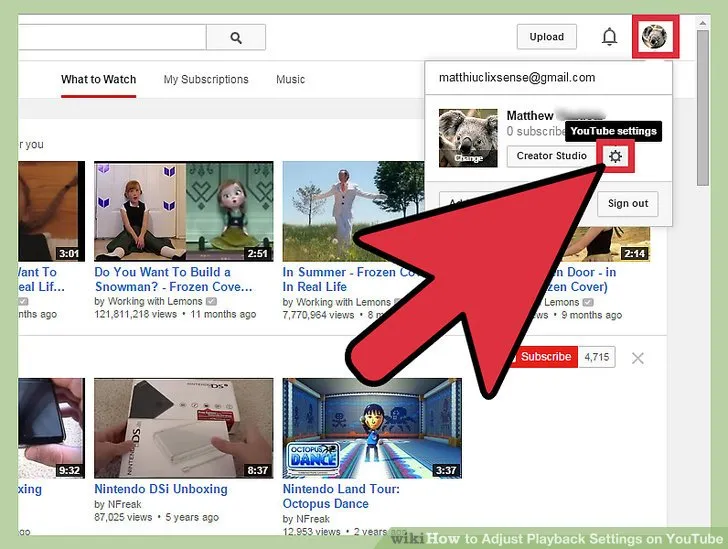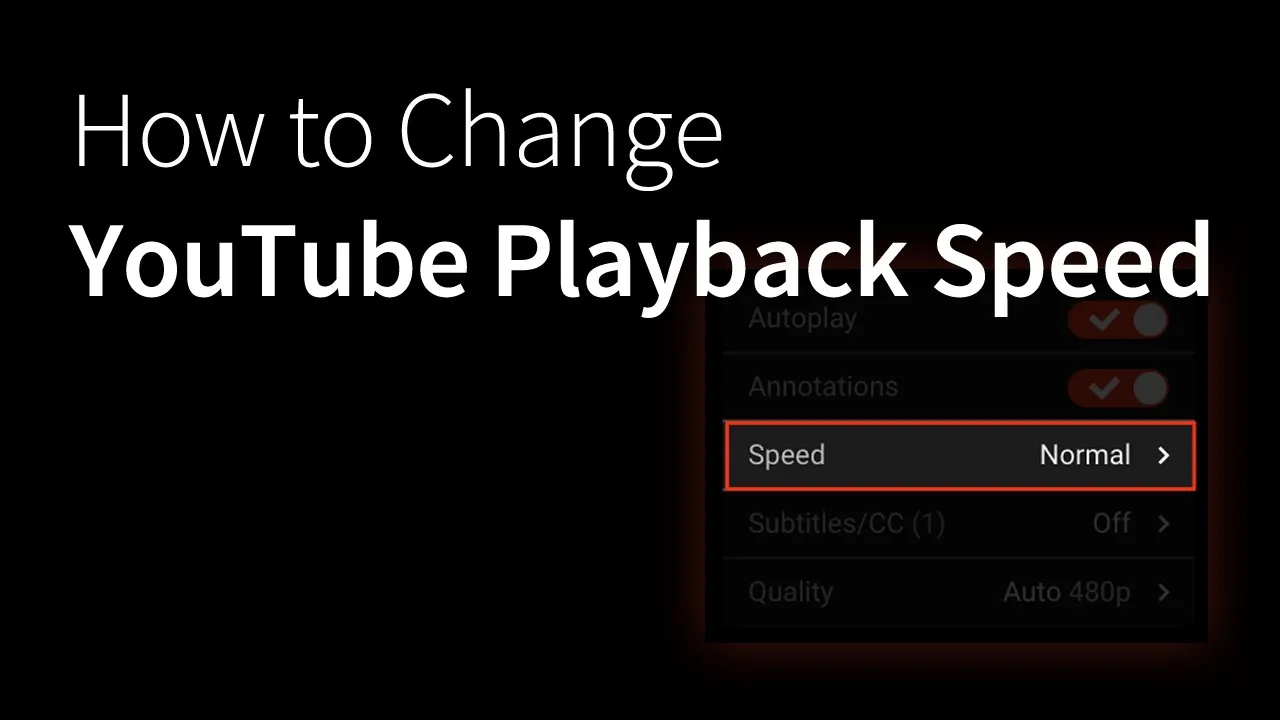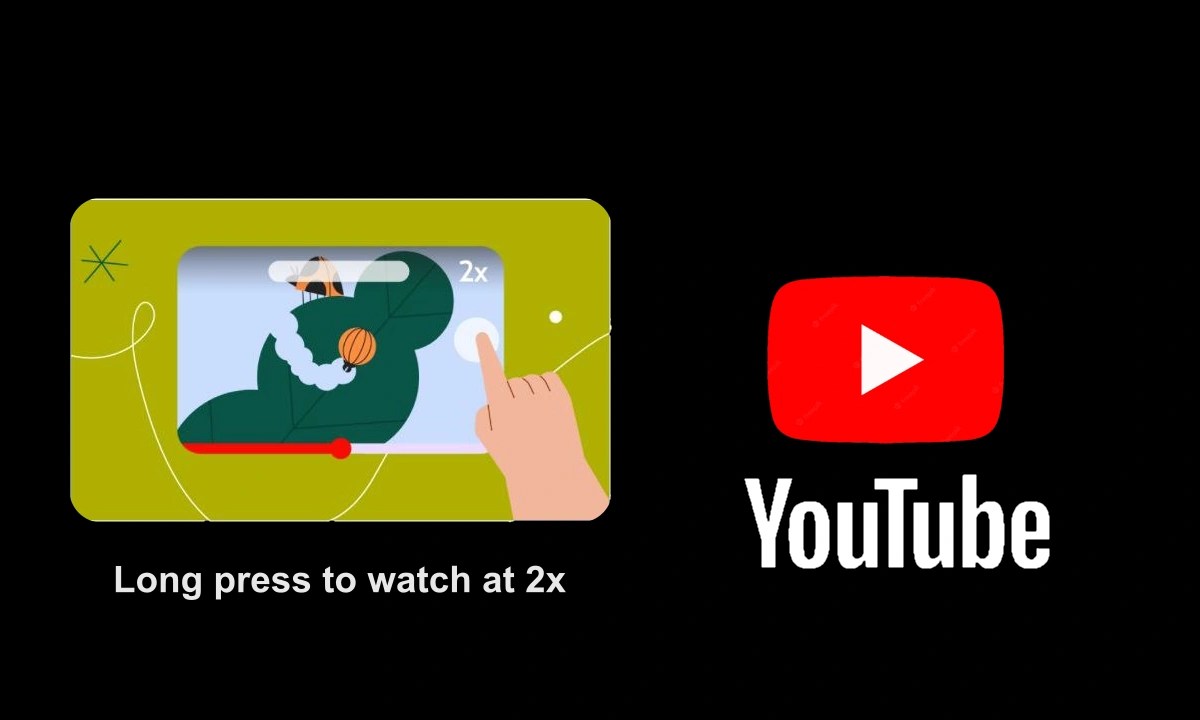YouTube has become a fundamental part of our digital lives, offering a vast library of videos ranging from tutorials to entertainment. But have you ever paused to think about how video playback works on this platform? Understanding the mechanics behind YouTube’s video playback can significantly enhance your viewing experience. From buffering to resolution options, grasping these concepts helps you make the most of your time spent on the site. So, let’s dive into the nitty-gritty of
How Video Playback Works on YouTube

At its core, YouTube video playback is a seamless blend of technology and user interface designed to deliver content efficiently. Here’s a breakdown of how it works:
- Streaming Protocols: YouTube uses adaptive bitrate streaming technology. This means that the video quality automatically adjusts based on your internet speed. If your connection is slow, YouTube will lower the quality to prevent buffering.
- Data Compression: Videos uploaded to YouTube are compressed to reduce file size without significantly sacrificing quality. This is crucial for faster loading times and less data usage.
- Buffering: Buffering refers to the process of pre-loading video data to ensure smooth playback. If your internet connection fluctuates, YouTube will buffer more data to maintain a continuous viewing experience.
- Resolution Options: YouTube allows users to select their preferred video quality, ranging from 144p to 8K. This flexibility enables viewers to optimize playback based on their device and internet capabilities.
- Playback Controls: The platform features user-friendly controls, including play, pause, rewind, and volume adjustment. These controls enhance user interaction and make it easier to enjoy content at your own pace.
In summary, YouTube’s video playback mechanism is a sophisticated system designed to provide a smooth and enjoyable viewing experience. By understanding these components, you can troubleshoot issues and make informed choices about how you consume video content. Next time you hit play, you’ll appreciate all the technology working behind the scenes to bring your favorite videos to life!
Also Read This: How to Make a Water Rocket Step by Step for a Fun DIY Project
3. Factors Affecting Video Playback Quality

When it comes to video playback on YouTube, several factors come into play that can significantly affect your viewing experience. Let's dive into these factors:
- Video Resolution: Higher resolutions, like 4K, offer stunning visuals but require more bandwidth. If your connection can’t keep up, the video quality may drop.
- Device Performance: The device you’re using plays a crucial role. Older devices may struggle to handle high-definition playback, leading to buffering or lagging.
- Browser Compatibility: Not all browsers are created equal. Some may handle video playback better than others, so it's worth trying a different browser if you encounter issues.
- Network Congestion: If multiple devices are using the same network, they can hog bandwidth. This is especially common in households with multiple users streaming movies, gaming, or downloading files simultaneously.
- Video Encoding: The way a video is encoded affects its playback. YouTube uses various codecs; some may perform better depending on your device and connection.
- Settings and Preferences: Sometimes, your own settings matter. If you have autoplay enabled or a specific playback quality set, it could impact your experience. Adjusting these settings might yield better results.
Understanding these factors can help you troubleshoot playback issues and optimize your viewing experience on YouTube.
Also Read This: How to Reply to Comments on Behance
4. The Role of Internet Speed in Video Playback

Internet speed is arguably one of the most critical factors influencing video playback on YouTube. Here’s why it matters:
A fast and stable internet connection is essential for streaming videos without interruptions. Here’s how internet speed affects your viewing experience:
| Internet Speed (Mbps) | Recommended Video Quality | Playback Experience |
|---|---|---|
| 0.5 - 1.5 | 144p - 240p | Possible buffering, low quality |
| 1.5 - 3 | 360p | Generally smooth, but may buffer |
| 3 - 7 | 480p | Good quality, minimal buffering |
| 7 - 25 | 720p | High quality, smooth playback |
| 25+ | 1080p and above | Excellent quality, no buffering |
As you can see from the table, your internet speed should match the video quality you want to enjoy. If you're experiencing buffering or low-quality playback, it might be time to check your connection speed. You could also consider upgrading your plan or using a wired connection for more stability.
In conclusion, internet speed is a vital aspect of video playback on YouTube. Ensuring you have a reliable and fast internet connection can vastly enhance your viewing experience.
Also Read This: How to Generate a CV from LinkedIn
Impact of Video Resolution on Viewing Experience
When it comes to enjoying videos on YouTube, the resolution plays a pivotal role in shaping your overall experience. You might have noticed options like 144p, 360p, 720p, and even 4K popping up when you click that gear icon on the video player. But what does it all mean? Let’s break it down!
Video resolution refers to the amount of detail that is displayed in a video. Higher resolutions mean more pixels, which translates to clearer and sharper images. Here’s how different resolutions can impact your viewing experience:
- 144p: This is the lowest resolution and often used for very slow internet connections. While it’s functional, don’t expect any detail—everything will look quite blurry.
- 360p: A step up from 144p, this resolution is decent for casual viewing, especially on smaller screens like smartphones.
- 720p: Also known as HD (High Definition), this resolution brings a noticeable improvement in clarity and is great for most standard viewing experiences.
- 1080p: Full HD offers a crisp and vibrant image, making it perfect for watching movies, gaming content, or anything where detail matters.
- 4K: This ultra-high-definition resolution provides stunning visuals that are incredibly lifelike. However, it requires a stable and fast internet connection to stream smoothly.
In summary, the resolution you choose can significantly affect how enjoyable your viewing experience is. Higher resolutions provide clearer images, but they also demand more from your internet connection. So, find the balance that works best for you!
Also Read This: How to Retrieve a Drawing You Purchased from iStock
Common Playback Issues and Troubleshooting Tips
We've all been there: you're ready to immerse yourself in a new video on YouTube when suddenly, it starts buffering, lags, or worse, it just won’t play! Don’t worry; let’s explore some common playback issues and how you can troubleshoot them, ensuring a smoother viewing experience.
Here are some frequent playback issues you might encounter:
- Buffering: This is often the most frustrating issue. Buffering occurs when your internet connection can’t keep up with the video stream. If you find yourself waiting, consider lowering the video resolution or pausing the video for a bit to allow it to buffer.
- Video Not Playing: Sometimes you click play, and nothing happens. This could be due to browser issues. Try refreshing the page or clearing your browser’s cache.
- Audio Issues: You might see the video playing, but you can’t hear a thing. Check your device’s volume settings and make sure your speakers or headphones are connected properly.
- Black Screen: A black screen can be alarming! This might be due to a temporary glitch. If refreshing the page doesn’t help, try restarting your browser or device.
Here are some quick troubleshooting tips:
| Issue | Solution |
|---|---|
| Buffering | Reduce video resolution or pause to let it buffer. |
| Video Not Playing | Refresh the page or clear your cache. |
| Audio Issues | Check volume settings and connections. |
| Black Screen | Refresh, restart browser, or restart your device. |
By keeping these common issues and solutions in mind, you can navigate YouTube with ease and focus on what really matters: enjoying your favorite videos!
Understanding Video Playback on YouTube and Its Impact on Your Viewing Experience
YouTube has revolutionized the way we consume video content, delivering everything from user-generated clips to high-budget productions. Understanding video playback on this platform is essential for optimizing your viewing experience. Several factors influence playback quality, including internet speed, device capabilities, and video resolution.
Here are the key factors that impact video playback on YouTube:
- Internet Speed: A stable and fast internet connection is critical. YouTube automatically adjusts the video quality based on your current bandwidth.
- Device Compatibility: Different devices (smartphones, tablets, laptops) handle video playback differently. Older devices may struggle with high-definition (HD) content.
- Video Resolution: YouTube supports various resolutions, from 144p to 8K. Higher resolutions provide better quality but require more bandwidth.
- Browser and App Performance: Ensure you are using an updated browser or app. Older versions may not support the latest playback technologies.
- Playback Settings: Users can manually select video quality settings. Automatic settings adapt based on connection, but manual selection can enhance quality.
Additionally, YouTube employs adaptive bitrate streaming, which dynamically adjusts video quality in real-time based on your connection speed. This technology helps minimize buffering and interruptions, ensuring a smoother viewing experience.
In conclusion, understanding the various elements that affect video playback on YouTube can significantly enhance your viewing experience. By optimizing your internet connection, device settings, and video quality preferences, you can enjoy seamless streaming and high-quality content.